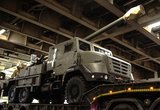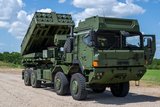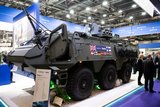Elbit subsidiary to make Bradley fire control components
Elbit Systems of America is to provide the US Army with gunner hand stations, commander hand stations and circuit cards for the Bradley IFV, under a five-year contract worth up to $79 million.
‘An initial purchase order of $26 million under the ID/IQ [indefinite delivery/indefinite quantity) contract, followed by a second purchase order of $12 million, have been issued to be executed over a three-year period,’ the company noted in a 31 August statement.
The Defense Logistics Agency awarded the contract to the US subsidiary of Israel-based Elbit Systems.
In the initial order, Elbit Systems of America plans production of the Bradley components until 2024.
Gunner hand stations allow soldiers to target and fire accurately, working with the commander hand stations that are used to drive the vehicle’s turret and initiate control signals to the turret fire control systems.
The circuit cards provide processing and power supply to the hand station units, which will replace damaged equipment from active units.
As part of our promise to deliver comprehensive coverage to our Defence Insight and Premium News subscribers, our curated defence news content provides the latest industry updates, contract awards and programme milestones.
Related Equipment in Defence Insight
More from Land Warfare
-
![Lockheed Martin to look further afield for GMARS rocket system opportunities]()
Lockheed Martin to look further afield for GMARS rocket system opportunities
The HX truck is already in use in many NATO and allied countries around the world as a logistics vehicle and carrier for high-value systems, including missile firing weapons, so its use for the Global Mobile Artillery Rocket System makes logistical sense.
-
Medium knocked out of British Army LMP, with CAVS as heavyweight champion
As the British Army seeks to modernise and consolidate its diverse vehicle fleet, yet another change in direction is underway.
-
![Energy evolution: How laser defence systems are powering the next phase of air defence (podcast)]()
Energy evolution: How laser defence systems are powering the next phase of air defence (podcast)
Laser-based air defence is moving from promise to deployment as global threats evolve. In this special podcast, we explore how high-energy laser systems are reshaping interception strategies.
























